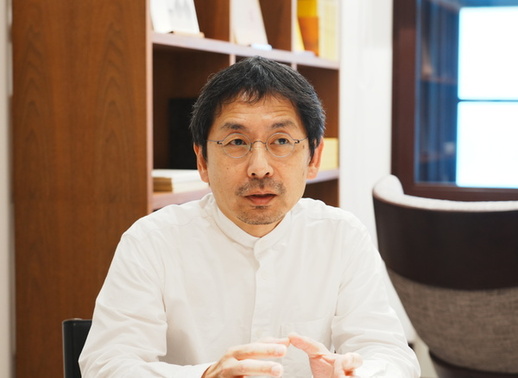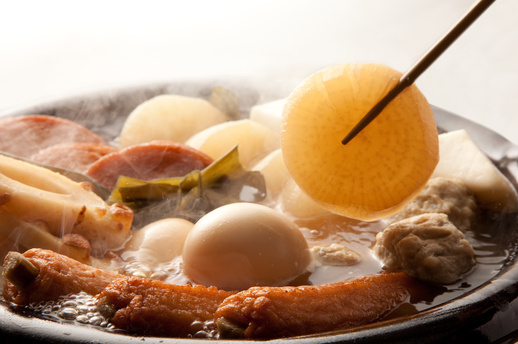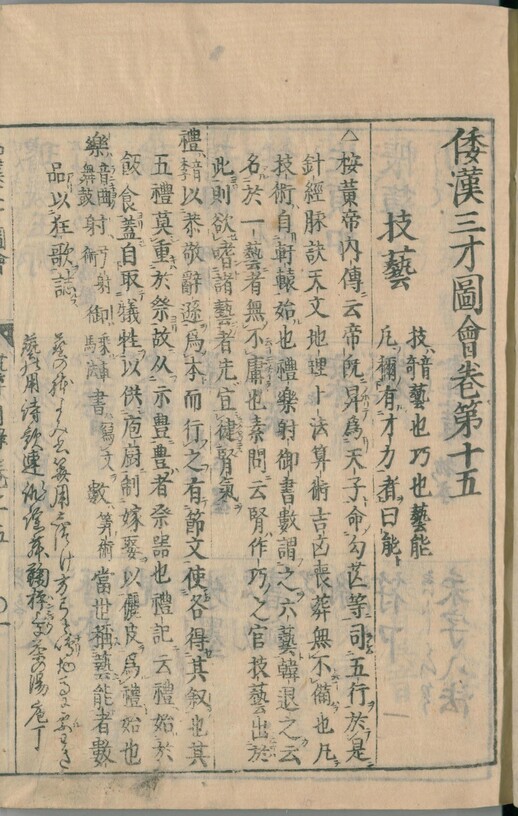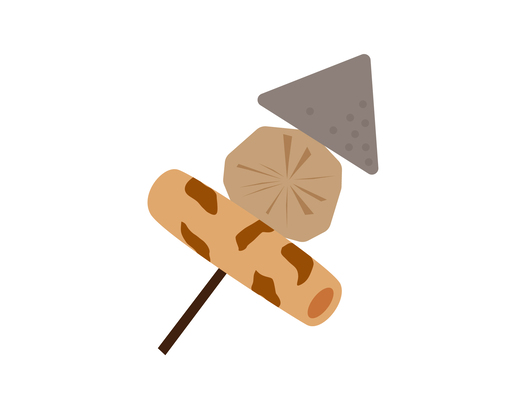2025.01.16
伝検通信(メルマガ)週刊メールマガジン「伝検通信」 第41号
週刊メールマガジン「伝検通信」第41号をお届けします。
今週のトップ記事は、国立工芸館・唐澤昌宏館長へのインタビューです。
「クイズで肩慣らし」は、前回クイズの答え・解説と、芸能に関する問題です。今月末までの第1回検定期間中は同試験の出題対象から外し、伝統文化に関するさまざまな問題をお届けします。
今月末まで実施の2級および3級の第1回伝検は下記サイトから申込みできます。ぜひトライしてみてください。公式テキスト、2級受験者向けオンライン講座も販売しています。
伝検申込サイト https://denken-test.jp/
目次
・ 新しい視点で石川から工芸文化発信 復興支援なお必要―国立工芸館の唐澤昌宏館長
・ 「クイズで肩慣らし」第40回=「芸能」
・ 伝検協会だより
新しい視点で石川から工芸文化発信 復興支援なお必要―国立工芸館の唐澤昌宏館長

インタビューに応じる国立工芸館の唐澤昌宏館長【時事通信社】
2020年に東京から金沢市へ移転した国立工芸館。輪島塗、九谷焼、加賀友禅といった漆芸、陶芸、染織の産地を多く抱える「工芸王国」で、一大観光地でもある石川県から、日本の工芸文化を発信し続けている。工芸の現状や今後の取り組みなどについて、同館の唐澤昌宏館長に聞いた。
―日本の工芸の現状をどう捉えているか。
現状を語る前提として、まず、日本の工芸には二つの担い手がいることを知っておいてほしい。個人作家と職人だ。われわれ工芸館が扱っているのは個人作家の作品であり、セレクトショップなどで販売されているのは、職人によって作られた工芸品というと、イメージしやすいかもしれない。
伝統工芸の担い手不足という問題を考えても、職人の世界では若い人の後継者が少ないが、個人作家はそうでもない。必要な技術そのものは、それぞれほぼ同じなので、双方のつながりや連携が密になれば、もっと(工芸を)盛り上げることができる。
―伝統文化・工芸の課題は何か。
伝統文化や工芸に関する情報発信は、いろいろな形で行われているが、パターン化していることも多い。新しい視点を持って、論議したり発信したりしないと、興味を持ってもらえない。工芸館でも工夫が必要だ。
―具体的には。
名前に「国立」とあるだけで、ハードルが高いと受け止められてしまうことがある。できるだけ多くの人に、ふらっと立ち寄ってもらえるようにしたい。コロナ禍では実施が難しかった対話型のトークイベントのような、もう少し来場者とじかに接するような機会をつくりたい。また、日本の工芸に影響を受けた、または、日本の工芸に影響を与えた海外の工芸作品を広く紹介する企画も検討したい。
―金沢市に移転して4年がたつ。
移転後、独立した一つの施設として興味を持ってもらえるようになった。石川県に来る観光客は、工芸に興味を持っている人も多く、国の施設があるなら立ち寄ってみようか、と足を運んでもらえている。熱心なお客さんが増え、館内での滞在期間が長くなった印象がある。
―石川県は2024年、地震、豪雨に見舞われた。
漆芸業界を支えている人を多く輩出している県立輪島漆芸技術研修所でも、地震や豪雨の被害は大きかった。そうした中でも、職員の皆さんは担い手を育てたいとの一心から、研修生に制作を続けさせ、12月には8カ月遅れの入学式も行われた。
一方、11月に金沢市で開かれた日本最大級の工芸イベント「KOUGEI EXPO IN ISHIKAWA」のような場に多くの人が集まりにぎわったが、「能登はまだまだ大変だ」という現状を知ってもらうことが大事だ。復興途上の様子を広めていくことができれば、支援もより広がると信じている。
「クイズで肩慣らし」第40回=「芸能」
~第1回検定期間中のクイズは同試験の出題対象から外します。またテキストの分野以外からも取り上げます~

寒い季節においしいおでん
第40回
問題:冬の定番料理、おでんの季節です。その語源となり、能楽の成り立ちにも影響を与えたといわれる民俗芸能は何でしょう。(答えと解説は次号で)

全体は105巻81冊に及ぶ膨大な書物。技藝は15巻目に登場する
【前回の問題と答え・解説】
問題:「工芸」という言葉は明治以降に生まれたものです。江戸時代中期の百科事典「和漢三才図会」の中で、「工芸」と同義で出てくる言葉は何でしょう。
答え:技藝
解説:「和漢三才図会」は中国・明時代の「三才図会」を参考に大坂の医師、寺島良案が編さんした日本の百科事典。この中に現在の工芸に関する「技藝」の項目が出てきます。「工芸」は明治3年(1870)、工部省設置の布告で初めて公文書に登場。2年後には政府が翌年のウィーン万国博覧会出品に向けた全国への通達で「工芸の進歩」「工芸の開化のもと」などと、優れた工芸制作を奨励しました。
伝検協会だより
▼伝検の学習・出題範囲の一つ「金工」技術の結晶であり、美術的価値と実用性を兼ね備えた特別な工芸品である日本刀。時事通信トレンドニュースによると、刃物の町として知られる岐阜県関市の「関鍛冶伝承館」で1月2日に、今年1年の安全と盛業を祈る日本刀の打ち初め式が行われました。
編集後記
伝検通信第41号をお届けしました。9連休の年末年始の後、最初の週末は3連休。その最終日は成人の日でした。若者の晴れ姿を見ながら、次の世代に継承していく日本の伝統文化のことを改めて想起しました。ぜひ腕試しで今月末まで実施されている伝検を受験してみてください。
【English version】
Weekly e-newsletter Denken Tsushin, No. 41.
We are pleased to present the 41st issue of our weekly e-newsletter, Denken Tsushin.
This week's top article is an interview with Masahiro Karasawa, Director of the National Arts and Crafts Museum.
The ‘Let's Practice with Quizzes’ section contains answers and explanations to the previous quiz, as well as questions on the performing arts. During the first examination period, which runs until the end of this month, the questions will be removed from the same examination and a variety of questions on traditional culture will be presented.
You can apply for the first Dengen examinations for Level 2 and Level 3, which will be held until the end of this month, at the website below. Please try it out. Official textbooks and online courses for Level 2 candidates are also available.
Denken application website: https://denken-test.jp/examination/
Contents.
・A new perspective on crafts culture from Ishikawa - Support for reconstruction still needed - Masahiro Karasawa, Director of the National Crafts Museum
・Quiz to familiarise yourself with the arts
・From the Denken Kyokai
Showcasing craft culture from Ishikawa from a new perspective Support for reconstruction is still needed - Masahiro Karasawa, Director of the National Crafts Museum.

Masahiro Karasawa, director of the National Arts and Crafts Museum, is interviewed [Jiji Press].
The National Crafts Museum moved from Tokyo to Kanazawa in 2020. The museum continues to promote Japan's craft culture from Ishikawa Prefecture, a major tourist destination and a ‘craft kingdom’ with many lacquerware, ceramics and dyeing and weaving production areas such as Wajima lacquerware, Kutani ware and Kaga yuzen. We asked the museum's director, Karasawa Masahiro, about the current state of Japanese crafts and future initiatives.
-What is your view of the current state of Japanese crafts?
First of all, I would like you to know that there are two types of bearers in Japanese crafts: individual artists and craftspeople. There are individual artists and craftspeople. It may be easier to imagine that we at the Crafts Museum deal with the works of individual artists, while the crafts sold in select shops are made by artisans.
Even when considering the problem of a shortage of bearers of traditional crafts, there are few young successors in the world of craftspeople, but this is not the case for individual craftspeople. The skills required are almost the same in each case, so if there are closer links and cooperation between the two, it will be possible to boost (crafts) even more.
-What are the challenges of traditional culture and crafts?
Information on traditional culture and crafts is disseminated in various ways, but it often follows a pattern. If we don't discuss and transmit information from new perspectives, we won't get people interested. We need to be creative in the crafts halls.
-Specifically.
The mere mention of ‘national’ in the name can be perceived as a hurdle. We want to make it possible for as many people as possible to drop in on a whim. We would like to create opportunities for more direct contact with visitors, such as interactive talk events, which were difficult to hold at the Corona Disaster. We would also like to consider introducing a wide range of overseas craft works that have been influenced by Japanese crafts or have had an impact on Japanese crafts.
-It has been four years since we moved to Kanazawa.
Since the relocation, the museum has gained interest as an independent facility. Many tourists who come to Ishikawa Prefecture have an interest in crafts, and they are now visiting the museum, thinking that if there is a national facility, they should drop by. I have the impression that the number of enthusiastic visitors has increased and the length of stay in the museum has lengthened.
-Ishikawa Prefecture was hit by an earthquake and torrential rains in 2024.
The Prefectural Wajima Lacquer Art Technical Training Institute, which has produced many people who support the lacquer art industry, was also severely damaged by the earthquake and torrential rains. Despite the damage, the staff were determined to nurture the people responsible for the industry and allowed the trainees to continue with their work, and in December an entrance ceremony was held eight months after the earthquake.
Meanwhile, although many people gathered at places like the KOUGEI EXPO IN ISHIKAWA, one of Japan's largest craft events, which was held in Kanazawa in November, it is important for people to know that Noto is still in trouble. We believe that if we can spread the word about how the recovery process is going on, support will spread even further.
‘Let's Practice with Quizzes’ No. 40 = ‘Performing arts’.
-Quizzes from the first examination period will not be included in the same examination. It will also cover topics from outside the field of the text -.

Delicious oden in cold weather (illustration).
40th Edition
Problem: It is the season for oden, a classic winter dish. What folk art is said to have been the origin of the word oden and to have influenced the origins of Noh theatre? (Answers and explanations will appear in the next issue.)

The whole is an enormous book in 105 volumes and 81 books. The technical art appears in volume 15.
Previous question, answer and explanation
Problem: The term ‘crafts’ was coined after the Meiji period (1868-1912). What word appears synonymously with ‘craft’ in the mid-Edo period encyclopaedia ‘Wakan sansai zue’?
Answer: craft.
Explanation: The ‘Waka Sansai Zukai’ is a Japanese encyclopaedia compiled by Terashima Ryoan, a doctor in Osaka, based on the ‘Sansai Zukai’ of the Ming dynasty in China. In it, an entry on ‘Gigei’, which relates to current crafts, appears. The term ‘crafts’ first appeared in official documents in 1870 (Meiji 3) in a proclamation establishing the Ministry of Industry, and two years later the government encouraged excellent craft production in a nationwide notice to exhibit at the Vienna World Exposition the following year, referring to the ‘progress of crafts’ and the ‘opening up of crafts’.
From the DENKEN Association
The Japanese sword is a special craft that combines artistic value and practicality, and is a crystallisation of ‘metalworking’ techniques, one of the subjects of study and examination for the ▼Denken. According to Jiji Press Trend News, on 2 January, a ceremony was held at the Seki Kaji Traditions Museum in Seki City, Gifu Prefecture, a town known for its cutlery, to pray for safety and prosperity in the coming year.
Editor's Postscript.
DENKEN News Letter No. 41 was delivered on the first weekend of a three-day weekend after a nine-day holiday New Year's Eve and New Year's Day. The last day was Adult's Day. As I watched the young people in their fine attire, I was reminded once again of the traditional Japanese culture that will be passed on to the next generation. We encourage you to test your skills and take the Denken test, which is being held until the end of this month.
カテゴリー: 伝検通信(メルマガ)





